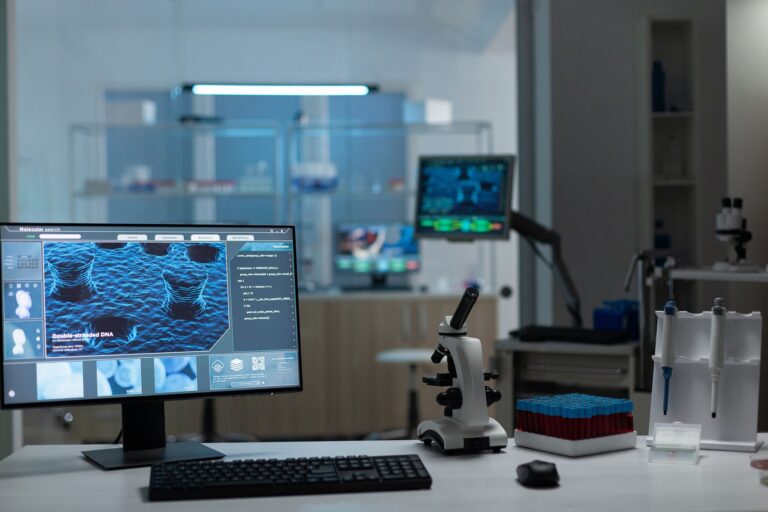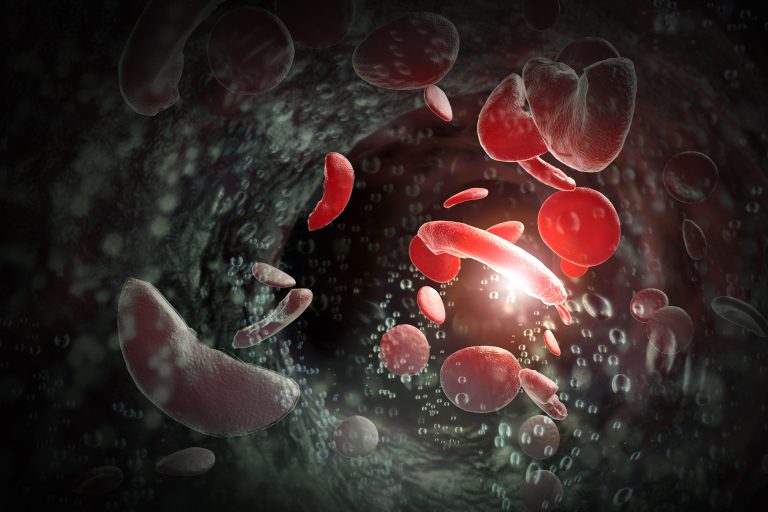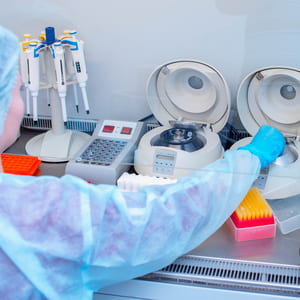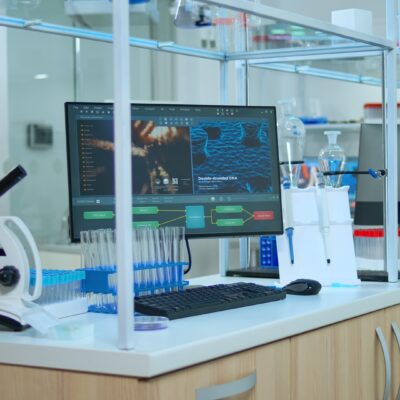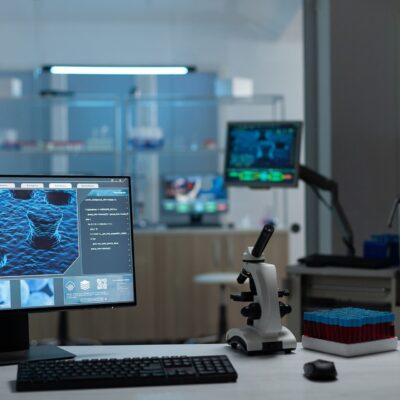Biotechnology and pharmaceutical industries play a pivotal role in improving the journey from diagnosis to treatment, striving to unlock new avenues that could offer hope to those waiting for a breakthrough. Here, we unfold the intricate battle against Parkinson’s – from understanding the disease and identifying its symptoms to the cutting-edge research that aims to change the reality of those living with it.
Overview – Parkinson’s Disease
Undeniably, Parkinson’s disease is a formidable foe. Characterised by the degeneration of dopamine-producing neurons in the brain, its motor symptoms are often the most recognisable – tremors, rigidity, and a pervasive slowness of movement. But PD is not simply a matter of impaired mobility. It is a multifaceted condition that can deteriorate one’s quality of life considerably. What makes Parkinson’s particularly insidious is the absence of a definitive test, making clinical evaluations based on symptoms and medical history the only current method for diagnosis. Currently, treatment is symptomatic. However, there are ongoing research efforts in the realms of biotechnology and the pharmaceutical industry focusing on developing disease-modifying therapies and even a potential cure.
Clinical reliance on symptom-based diagnosis
Clinical reliance on symptom-based diagnosis is a crucial aspect of Parkinson’s disease management, as the absence of a definitive test necessitates careful observation and assessment of symptoms by healthcare professionals. However, advancements in medical technology, such as imaging techniques and biomarker research, are gradually supplementing clinical evaluations, offering potential avenues for more accurate diagnosis and early detection.
Focus on symptomatic treatments such as medication and physiotherapy
Clinical reliance on symptom-based diagnosis is a crucial aspect of Parkinson’s disease management, as the absence of a definitive test necessitates careful observation and assessment of symptoms by healthcare professionals. However, advancements in medical technology, such as imaging techniques and biomarker research, are gradually supplementing clinical evaluations, offering potential avenues for more accurate diagnosis and early detection.In tandem with clinical diagnosis, the focus on symptomatic treatments like medication and physiotherapy remains paramount in alleviating the motor symptoms and improving the quality of life for individuals with Parkinson’s disease. These treatments aim to allow patients to maintain functional independence and engage in daily activities more effectively.
Deep brain stimulation as an advanced surgical intervention
Deep brain stimulation (DBS) has emerged as a significant advancement in the surgical management of Parkinson’s disease. By implanting electrodes into specific brain regions and delivering controlled electrical pulses, DBS can effectively alleviate motor symptoms and enhance motor function in individuals who are not adequately responsive to medication alone. Continued refinement of DBS techniques and ongoing research into its long-term efficacy and safety contribute to its role as an advanced therapeutic option for Parkinson’s patients.
Biotech and pharma research pursuing disease-altering treatments
In addition to symptomatic management, biotechnology and pharmaceutical research are actively pursuing disease-altering treatments for Parkinson’s disease. These efforts involve exploring novel therapeutic targets, developing disease-modifying drugs, and investigating innovative treatment modalities such as gene therapy and stem cell therapy. The ultimate goal is to stop or slow the progression of the disease, potentially offering a cure or significantly delaying its debilitating effects on individuals affected by Parkinson’s. This dedication to research and innovation underscores a collective commitment to transforming the landscape of Parkinson’s therapy and realizing the possibility of a cure.
Understanding Parkinson’s entails not only grappling with its present-day implications but also actively engaging in innovative research. The aim is to transform the current landscape of therapies to achieve what was once thought unreachable – a cure.
Symptoms of Parkinson’s Disease
The battle against Parkinson’s disease begins with recognising the signs. The primary manifestations are motor-related: tremors often starting in one hand, a general slowness of movement named bradykinesia, and a stiffness that hinders daily tasks. PD’s reach extends beyond the physical, preying on non-motor aspects like sleep, sensation, and cognition, which can appear even before motor symptoms set in. Complications like impaired balance and coordination raise the risk of falls, while speech and writing undergo noticeable changes.
- Motor symptoms: hand tremors, bradykinesia, and muscle stiffness
- Early non-motor symptoms affecting sleep, sensation, and cognition
- Postural instability leading to balance issues
- Speech difficulties and micrographia
With its diverse and progressive nature, Parkinson’s presents a complex challenge for diagnosis and management. Individual experiences with the disease vary widely, proving that the fight against PD requires both a broad understanding and highly personalised care strategies.
Causes and Risk Factors of Parkinson’s Disease
Parkinson’s remains an enigma, with most cases being idiopathic, meaning the cause is unknown. Yet, the puzzle of PD isn’t entirely unsolvable. Genetic mutations, albeit rare, can indicate hereditary patterns and predispose individuals to early-onset forms. Exposure to environmental enemies like pesticides heightens the risk. Age is the prime risk factor, generally afflicting those over sixty. Even life’s blows, such as head injuries, and lifestyle choices might tip the balance toward PD, though research here is ongoing.
- Genetic links in a minority of cases, leading to early-onset PD
While most cases are idiopathic, meaning the cause is unknown, genetic mutations can play a significant role in predisposing individuals to the condition. Understanding these genetic factors not only sheds light on the pathophysiology of PD but also aids in identifying individuals at higher risk, facilitating early intervention and personalized treatment approaches.
- Pesticides and heavy metals as environmental hazards
Exposure to environmental hazards such as pesticides and heavy metals has been implicated as a risk factor for Parkinson’s disease. Prolonged exposure to these substances, either occupationally or through residential proximity to agricultural areas, may contribute to the development or progression of PD by causing oxidative stress, inflammation, and damage to dopamine-producing neurons in the brain. Recognizing and mitigating these environmental exposures are essential steps in reducing the burden of Parkinson’s disease.
- Aging as the principle risk factor
Aging is widely recognized as the primary risk factor for Parkinson’s disease. While PD can affect individuals of any age, the prevalence and incidence increase with advancing age, particularly after the age of sixty. The aging process is associated with various physiological changes, including mitochondrial dysfunction, accumulation of cellular damage, and impaired protein homeostasis, all of which may contribute to the development of Parkinson’s disease. Understanding the interplay between aging and Parkinson’s pathology is crucial for developing targeted interventions and therapies aimed at mitigating age-related risk factors.
- Neurotrauma’s association with PD
Neurotrauma, particularly traumatic brain injuries, has been associated with an increased risk of Parkinson’s disease. The occurrence of head injuries, whether due to accidents, sports-related activities, or military combat, has sparked conversations on the importance of neuroprotection and injury prevention strategies. Understanding the underlying mechanisms linking neurotrauma to PD pathogenesis is essential for developing targeted interventions aimed at reducing disease risk among vulnerable populations.
- Investigating lifestyle influences and other health conditions for potential effects
Investigating lifestyle influences and other health conditions for potential effects on Parkinson’s disease is an essential aspect of research in the field. Lifestyle factors such as diet, physical activity, smoking, and alcohol consumption have been implicated in modifying the risk of developing PD. Additionally, comorbidities such as diabetes, cardiovascular disease, and depression may influence the onset and progression of Parkinson’s disease through shared biological pathways or interactions with medications. By elucidating the complex interplay between lifestyle factors, health conditions, and Parkinson’s disease, researchers can identify modifiable risk factors and inform preventive strategies and interventions aimed at reducing the global burden of PD.
Investigating Parkinson’s means drawing lines between invisible dots, exploring the depths of our biology, and the breadth of our environment.
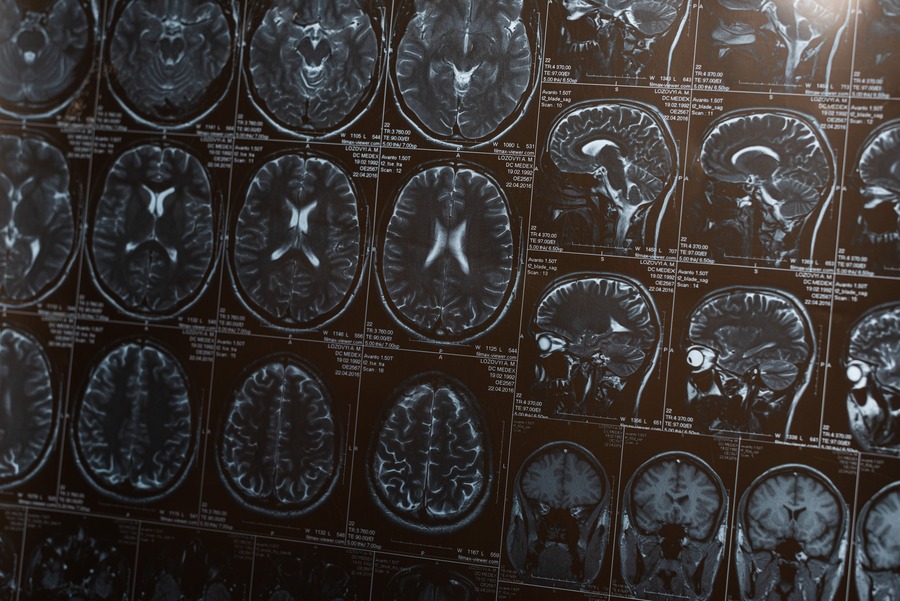
Gene Therapy
Gene therapy is tantamount to cell-level code editing, offering a beacon of hope in addressing Parkinson’s. It involves rectifying genetic defacements or augmenting the production of vital proteins. Focused on the brain’s affected areas, its ambition is to revive the faltering dopamine neurons to slow or arrest Parkinson’s degenerative march. Recent strides in viral vector technology have heightened its therapeutic potential and safety.
Unlocking the potential: correcting genetic flaws
Gene therapy in Parkinson’s disease presents a revolutionary approach aimed at correcting genetic abnormalities at the cellular level. By targeting specific genetic defects associated with the disease, gene therapy holds the promise of rectifying these alterations, potentially restoring normal cellular function and mitigating the underlying pathology of Parkinson’s.
Restoring neural functionality: a focus on dopamine neurons
At the core of gene therapy for Parkinson’s lies the restoration of dopamine neuron functionality within affected brain regions. By enhancing the production of vital proteins or rectifying genetic defects, gene therapy endeavors to revive faltering dopamine neurons, thereby potentially slowing down or even halting the progressive degeneration characteristic of Parkinson’s disease.Precision Delivery: Advancements in Viral Vector Technology Advancements in viral vector technology represent a significant leap forward in the field of gene therapy delivery. These sophisticated delivery systems offer improved safety and precision, ensuring that therapeutic genes are efficiently delivered to target cells within the brain. Such precision enhances the effectiveness of gene therapy while minimizing potential side effects, thereby increasing its therapeutic potential for Parkinson’s patients.
Towards long-term solutions: ongoing clinical trials
Ongoing clinical trials play a pivotal role in evaluating the long-term safety and effectiveness of gene therapy in Parkinson’s disease management. These trials aim to assess the durability of therapeutic effects, elucidate optimal dosing regimens, and refine delivery techniques. Through rigorous scientific investigation, researchers strive to establish gene therapy as a viable long-term solution for alleviating symptoms and modifying the course of Parkinson’s disease.
Rewriting the narrative: a future beyond symptom management
The culmination of successful gene therapy could herald a paradigm shift in the treatment of Parkinson’s disease. By addressing the underlying genetic causes and restoring neural functionality, gene therapy has the potential to replace the current dependency on symptom management with a lasting respite. This transformative approach holds promise for offering Parkinson’s patients a brighter future with improved quality of life and long-term disease control. The culmination of gene therapy’s success could rewrite the PD narrative, replacing the dependency on symptom management with a lasting respite.
Essential research to devise all-encompassing preventive measures and personal health plans
Essential research is underway to devise all-encompassing preventive measures and personalized health plans for Parkinson’s disease. By integrating insights from genetics, environmental exposures, lifestyle factors, and neurotrauma, researchers aim to develop comprehensive strategies for disease prevention and risk reduction. These efforts underscore the importance of adopting a holistic approach to combatting Parkinson’s disease, one that not only treats the symptoms but also anticipates and addresses the myriad factors contributing to its onset and progression.
In conclusion, our journey through the biotech and pharma landscapes reveals a steadfast commitment to confronting Parkinson’s disease. From decoding its symptoms and origins to piloting gene therapy, cell-based treatments, and pharmacological innovations, these industries are the forerunners in this medical crusade. Their combined efforts in clinical research and a profound understanding of genetic and non-genetic factors carve a path from today’s knowledge towards tomorrow’s cures. Now, as the tide of information flows in, prospects for those with Parkinson’s are shifting from management to hope—the hope of lasting remedies that will restore lives to their fullest potential.




